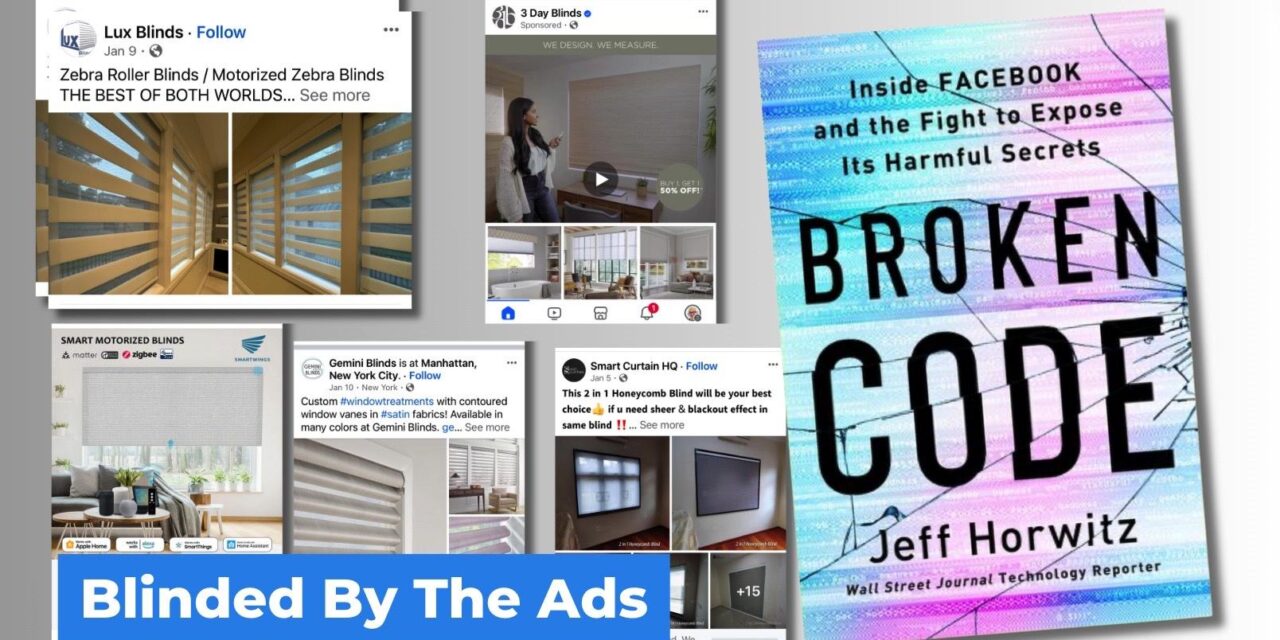by Steven Rosenbaum
Source: www.mediapost.com, February 2024
Does advertising make everything worse? One of the mini-blinds in my living room is starting to show age.
I Googled something, or maybe Amazon heard me mention blinds.
But now there’s an endless stream of ads for blinds. They are all the same. They show me pretty pictures and ask for my email address so a salesperson can reach out to me. Literally the same — no prices, no advice, no unique selling proposition. Just pictures of blinds.
Spending a few days in Washington this week, I couldn’t help but think about how painfully dangerous the impact of social media on children has become. For social media platforms, children — in some cases, very young ones — are little more than the product.
Attending the hearing were two dozen 19- to 23-year-olds wearing shirts reading, “I’m worth more than $270.” The statistic comes from a lawsuit against Meta filed by representatives of 33 states in November, citing a 2018 email from a Facebook employee that put that number on the future profits the company could expect from a young user: “The lifetime value of a 13 y/o teen is roughly $270 per teen.” Senator Marsha Blackburn (R-TN) brought up the statistic and the T-shirts while she chastised Zuckerberg during the hearing.
The advocates were from Design it for Us and Young People’s Alliance. “We put the number on the shirts so that he could see that valuing one person’s life at 270 dollars,” YPA’s Ava Smithing told SFGATE.
“Facebook’s products routinely garnered higher growth rates at the expense of content quality and user safety. Features that produced marginal usage increases were disproportionately responsible for spam on WhatsApp, the explosive growth of hate groups, and the spread of false news stories via reshares,” wrote Jeff Horwitz in his new book “Broken Code: Inside Facebook and the Fight to Expose Its Harmful Secrets.”
“Despite launching a Child Safety Task Force in June, the company hasn’t fixed the problems underlying the issues we identified, such as the pedophilic ‘accounts you should follow’ recommendations to autocomplete suggestions that users look for ‘child pornography links’ in search,” Horwitz continued.
One of Horwitz’s most passionate subjects profiled is Arturo Bejar, who worked for Facebook on two different occasions.
When I talked with Bejar in Washington before the Senate hearing, he was already expecting Mark Zuckerberg to lie on the stand.
After the hearing, I found Bejar standing on the lawn of the Capitol as part of a rally organized by Accountable Tech and Design It For Us.
Said Bejar, “First and foremost, these deaths are preventable. They have the technology to do it. They have the means to do it. They have the infrastructure. They just don’t have the will.”
When his teenage daughter was sexually harassed on Instagram, Bejar brought his deeply researched concerns to Zuckerberg. Bejar led the Compassion Project inside Facebook, which looked at ways that technology could help support teens in emotional distress and alleviate suicide and bullying.
“It is very straightforward and not difficult for them to reduce the amount of harmful content that teens get exposed to. It is not difficult for them to provide tools to say, ‘hey, I just got something that harassed me, made me uncomfortable,’” Bejar explained. Zuckerberg “dares to stand today and say, our job is to make the best tools that we can. That was a lie. We don’t allow under-13-year-olds on Instagram. That is a lie.”
Zamaan Qureshi, co-founder of the Design it For Us coalition said, with the Capitol Dome in the background: “We know that [$270] is what Meta thinks of you and me, as young products out to be exploited — as young products to be squeezed out of every dollar we have to offer. There is a growing, powerful movement of young people demanding a better online future.”
Back on Facebook, I’m watching a steady flow of window blinds fill my newsfeed and thinking of Qureshi and Bejar. Facebook is literally blinding me with ads and selling the privacy and innocence of its young users to people dedicated to doing them harm. Once you see what the company is willing to do, it’s hard to look away.

